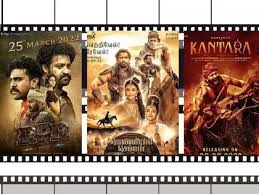Discover how South Indian thriller movies have evolved over the decades, blending gripping storytelling, innovative cinematography, and modern technology to redefine the genre. Explore the past, present, and future of this dynamic cinematic landscape.
South Indian cinema, encompassing industries such as Tamil, Telugu, Malayalam, and Kannada, has long been a powerhouse of storytelling and innovation. Thriller movies from this region have undergone a dramatic transformation, moving from conventional whodunits to complex psychological thrillers and high-tech action dramas. This article delves into the journey of South Indian thrillers, highlighting their evolution, impact, and what the future holds for this genre.
The Golden Era: 1950s – 1970s
The early decades of South Indian thrillers were heavily influenced by literature and stage plays. The storytelling was straightforward, often revolving around crime, mystery, and revenge. Some key characteristics of thrillers from this period include:
- Influence of Novels: Many thrillers were adaptations of popular detective novels, drawing inspiration from classic Indian and Western literary works.
- Black and White Cinematography: Films like Andha Naal (1954) set the tone for investigative thrillers, using high-contrast cinematography to build suspense.
- Melodramatic Elements: Family drama intertwined with mystery was a common trope, making the stories more relatable to audiences.
The Experimental Phase: 1980s – 1990s
During the 80s and 90s, South Indian filmmakers began experimenting with complex narratives and unique storytelling techniques. This era saw the rise of more nuanced thrillers with psychological and supernatural elements.
Key Developments:
- Psychological Thrillers: Movies like Sigappu Rojakkal (1978) introduced audiences to serial killers and twisted human psychology.
- Introduction of Neo-Noir Elements: Darker cinematography and morally ambiguous characters became more prevalent.
- Music and Sound Design: Background scores became an essential element in building tension and mood, with composers like Ilaiyaraaja leading the way.
The Rise of the New-Age Thriller: 2000s – 2010s
With advancements in technology and changing audience preferences, South Indian thrillers entered a new phase in the 2000s and 2010s. Directors embraced more dynamic storytelling techniques, non-linear narratives, and realistic characters.
Defining Features:
- Realistic and Gritty Narratives: Movies like Anniyan (2005) and Eeram (2009) blended psychological depth with commercial appeal.
- Advanced Cinematography: The use of digital technology and innovative camera work enhanced the visual storytelling experience.
- Global Influence: South Indian thrillers began incorporating Hollywood-style action sequences and editing techniques.
The Modern Era: 2020s and Beyond
The 2020s have ushered in an era where South Indian thrillers are breaking new ground, gaining international recognition, and setting new benchmarks in filmmaking.
Trends Shaping the Future:
- OTT Revolution: Streaming platforms like Netflix and Amazon Prime have given South Indian thrillers a global platform, leading to bold and experimental storytelling.
- AI and VFX Integration: High-tech thrillers like Vikram Vedha (2022) showcase the seamless blending of artificial intelligence and visual effects.
- Multi-Lingual Appeal: Films are now being made with a pan-Indian audience in mind, often being released in multiple languages simultaneously.
South Indian thriller movies have transformed significantly over the decades, evolving from simple mystery narratives to complex, high-tech psychological dramas. With global audiences embracing these films, the future looks bright for this genre, promising even more innovation and compelling storytelling.
FAQ
1. What are some must-watch South Indian thriller movies?
Some of the best South Indian thrillers include Andha Naal, Eeram, Anniyan, Ratsasan, and Vikram Vedha.
2. How has technology influenced South Indian thrillers?
Advancements in cinematography, CGI, and artificial intelligence have enhanced visual storytelling and allowed for more complex narratives.
3. Are South Indian thrillers popular outside India?
Yes, many South Indian thrillers have gained international recognition and a global audience through streaming platforms and film festivals.
4. What makes South Indian thrillers unique?
Their blend of cultural storytelling, strong character arcs, and innovative cinematography set them apart from thrillers in other industries.
5. What is the future of South Indian thrillers?
With the rise of digital platforms and technological advancements, the genre is set to become more experimental and globally influential.
